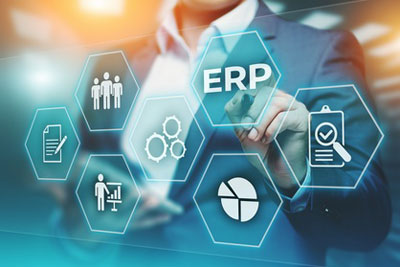Client Question
Before jumping to conclusions and pursuing a system upgrade, should we explore whether we are maximizing the use of our current system? Or is it just not modern enough to support our growth in a scalable, profitable way?
This is often the subject of a client call. After all, no one in their right mind would want to embark on an ERP upgrade unless absolutely necessary. The issue is that the situation can be quite complex. How do we separate what’s important vs. what’s not? In this case study, a client knew they had to upgrade because their system was long out of maintenance. The only question was how compelling was the upgrade to support their customers’ requirements and an efficient operation?
The Answer
Although they clearly required an upgrade to get into the current century, the question we explored is whether they could continue to improve performance using their current system to a degree large enough to delay the upgrade until they were better prepared. Unfortunately, since they had let their current system go for ‘too long’, it was highly dependent on current technical resources, partly tailored to their business processes and customized to their needs. At first glance, that doesn’t sound bad! However, the issue is that it was by no means scalable, would require significant education on concepts so that folks started thinking instead of following the process designed into the current system and they were highly dependent on resources that could leave or “get hit by a bus”. Doesn’t that sound like something you say but it doesn’t happen? Not so; one of my clients had that exact situation occur, even though it is just a phrase for a myriad of issues that could arise.
After digging into their business requirements (current as well as a few years into the future), we found ample opportunity to further leverage already existing functionality to meet customer requirements and delay the upgrade for several months; however, that still wasn’t enough. We also had to take actions to secure at risk critical resources to the degree feasible (since we clearly cannot plan 100% for the ‘hit by the bus’ scenario). We were successful in proactively addressing the situation so that we didn’t have to leap before we knew if we had a net. Yet we weren’t 100% comfortable and so we also put together an aggressive plan for ERP selection to find the best fit system to meet their needs (without customizing) and equally important a best fit partner that could proactively understand and think through their education needs (which were VERY different from training needs).
Food For Thought
Although we found a solution, the CEO was on pins and needles once he realized the extent of the situation. Don’t leave your infrastructure to chance. Even though all can seem quite fine at the high level, it is important you know whether you are being held up by a solid foundation or a nice-looking pile of straw. That is before considering what you’ll need at least 18 months into the future. You will not select the best system to support your plans or you’ll skimp on implementation. Every client that cut corners overspent by 20-100% and that is before considering the impact on customer service. Do you have a scalable ERP system to support your business growth and profitability? If not, start there!



